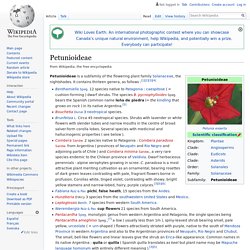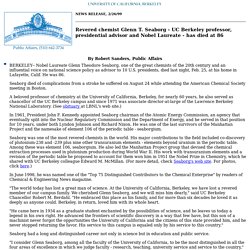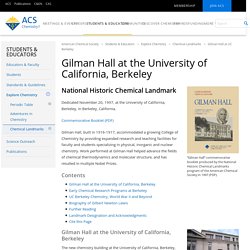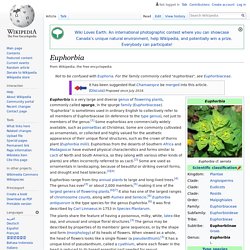

Naturalist. Louis Agassiz. 19th-century Swiss naturalist Jean Louis Rodolphe Agassiz (/ˈæɡəsi/; French: [aɡasi]; May 28, 1807 – December 14, 1873) was a Swiss-American biologist and geologist recognized as an innovative and prodigious scholar of Earth's natural history.

Agassiz grew up in Switzerland. Epiphenomenon. Rivea corybosa. Wizard of the upper amazon - Recherche Google. Wizard of the Upper Amazon: The Story of Manuel Córdova-Rios - Manuel Córdova-Ríos, Frank Bruce Lamb. F. Bruce Lamb. Summer love - Recherche Google. Psychedelic Fauna for Psychonaut Hunters: A Mini-Review. Introduction Humans have used a range of naturally occurring psychoactive substances to modify their minds, for recreational/mystic/spiritual/religious/psychedelic purposes, over millennia (1).

Many psychotropic chemicals, widely distributed in plants and animals, were discovered by ancient hunter-gatherers prior to the Neolithic agricultural revolution (2). Humans have learnt how to cultivate/modify/exploit these chemicals and pass on this cultural knowledge to others (1–3). Psychedelic Fauna for Psychonaut Hunters: A Mini-Review. Petunioideae. Petunioideae is a subfamily of the flowering plant family Solanaceae, the nightshades.

It contains thirteen genera, as follows :[1][2][3][4] The Patagonian genera Benthamiella, Combera and Pantacantha merit referral from subfamily Petunioideae to subfamily Goetzeoideae of the Solanaceae. Ornamental use[edit] Medicinal use[edit] Alexander Shulgin. Alexander "Sasha" Theodore Shulgin[2] (born June 17, 1925) is an American medicinal chemist, biochemist, pharmacologist, psychopharmacologist, and author.

Shulgin is credited with introducing MDMA ("ecstasy") to psychologists in the late 1970s for psychopharmaceutical use. He discovered, synthesized, and personally bioassayed over 230 psychoactive compounds, and evaluated them for their psychedelic and/or entactogenic potential. Due in part to Shulgin's extensive work in the field of psychedelic research and the rational drug design of psychedelic drugs, he has since been dubbed the "godfather of psychedelics".[3] Life and career[edit]
02.26.99 - Revered chemist Glenn T. Seaborg -UC Berkeley professor, presidential advisor and Nobel Laureate - has died at 86. BERKELEY-- Nobel Laureate Glenn Theodore Seaborg, one of the great chemists of the 20th century and an influential voice on national science policy as advisor to 10 U.S. presidents, died last night, Feb. 25, at his home in Lafayette, Calif.

He was 86. Seaborg died of complications from a stroke he suffered on August 24 while attending the American Chemical Society meeting in Boston. A beloved professor of chemistry at the University of California, Berkeley, for nearly 60 years, he also served as chancellor of the UC Berkeley campus and since 1971 was associate director-at-large of the Lawrence Berkeley National Laboratory. Berkeley and the Bomb. “Now I have an idea that you will like California and California will like you,” University of California, Berkeley, physicist Raymond Birge wrote to Yale professor Ernest Lawrence in early 1928.

Lawrence, a lanky, garrulous South Dakotan, was at the time one of the country’s most promising young physicists, and Birge was eager to fill Berkeley’s grand new physics building with talent. Birge knew that Berkeley, still a relatively obscure public university, could not offer Yale’s prestige, so he wooed Lawrence with promises of rapid advancement and generous funding: Berkeley was less constrained by tradition than its East Coast rivals, and the military contributions of its chemists and engineers during World War I had enriched it with government grants. Gilman Hall University of California, Berkeley - National Historic Chemical Landmark.
Biography of Gilbert Newton Lewis G.

N. Lewis was respected by knowledgeable contemporaries for his writing and the excellence of his research, but valued as much for his clear thinking, his scholarly enthusiasm, and his ability to lead other scientific thinkers. Lewis was born in Weymouth, Massachusetts, in 1875, but spent much of his youth in Lincoln, Nebraska. After being schooled at home, he was admitted in 1889 to a preparatory school associated with the University of Nebraska. Lewis was not satisfied with the research atmosphere at Harvard.
Bufotenin (CHEBI:3210) Euphorbia. A genus of flowering plants belonging to the spurge family Euphorbias range from tiny annual plants to large and long-lived trees.[4] The genus has over[3] or about 2,000 members,[5] making it one of the largest genera of flowering plants.[6][7] It also has one of the largest ranges of chromosome counts, along with Rumex and Senecio.[6] Euphorbia antiquorum is the type species for the genus Euphorbia.[8] It was first described by Carl Linnaeus in 1753 in Species Plantarum.

The genus can be found all over the world.[3] The forms range from annual plants lying on the ground, to well-developed tall trees.[3] In deserts in Madagascar and southern Africa, convergent evolution has led to cactus-like forms where the plants occupy the same ecological niche as cacti do in deserts of North and South America.[3] The genus is primarily found in the tropical and subtropical regions of Africa and the Americas, but also in temperate zones worldwide. Misidentification as cacti[edit] Etymology[edit] Calaway dodson marie selby botanical gardens - Recherche Google. Mediation of cardiac glycoside insensitivity in the monarch butterfly (Danaus plexippus): Role of an amino acid substitution in the ouabain binding... - PubMed - NCBI.
Heliconius. Heliconius comprises a colorful and widespread genus of brush-footed butterflies commonly known as the longwings or heliconians.
This genus is distributed throughout the tropical and subtropical regions of the New World, from South America as far north as the southern United States. The larvae of these butterflies eat passion flower vines (Passifloraceae). Adults exhibit bright wing color patterns to signal their distastefulness to potential predators. Homepage. The Canal Zone. For almost 30 years, Dr.

Neal Smith has pursued an elusive goal. In the heat of the tropics, he has conducted basic research on the Urania moth in search of answers concerning its migratory behavior and its ancient relationship with the plant it's caterpillars rely on for food. Smith's enthusiasm for the ongoing work seems boundless. Neal Griffith Smith Interview · SOVA. Historical Note Neal G. Smith (1937- ), an evolutionary biologist, joined the staff of the Smithsonian Tropical Research Institute (STRI) in 1963. He was born on April 3, 1937, in Brooklyn, New York.
He received his B.A. from St. John's University in 1958 while volunteering at the American Museum of Natural History (AMNH). Smith's interest in zoology began early, when as a youth in Brooklyn he watched gulls at the New York City garbage dumps and joined local bird watching societies. Acc. 17-057, Smith, Neal Griffith 1937-, Neal Griffith Smith Papers, circa 1925-1995. Papilio polyxenes. Papilio polyxenes, the (eastern) black swallowtail, American swallowtail or parsnip swallowtail,[1] is a butterfly found throughout much of North America. It is the state butterfly of Oklahoma and New Jersey.[2] An extremely similar-appearing species, Papilio joanae, occurs in the Ozark Mountains region, but it appears to be closely related to Papilio machaon, rather than P. polyxenes. The species is named after the figure in Greek mythology, Polyxena (pron.: /pəˈlɪksɨnə/; Greek: Πολυξένη), who was the youngest daughter of King Priam of Troy. Its caterpillar is called the parsley worm because the caterpillar feeds on parsley.[1] The Papilio polyxenes demonstrates polyandry and a lek mating system, showing no male parental care and display sites.
Females are therefore able to choose males based on these sites and males are the only resource the females find at these sites.[3] Taxonomy[edit] Distribution[edit] Papilio polyxenes are found from southern Canada through to South America. Revisiting the dietary niche: When is a mammalian herbivore a specialist? We use cookies to enhance your experience on our website.By continuing to use our website, you are agreeing to our use of cookies. You can change your cookie settings at any time. <a href=" Find out more</a> Skip to Main Content. Definition & Distribution. Masticatory. Plant masticatories and their medicinal importance from Assam & Meghalaya. Author(s): Kongkona Borborah, S. Baruah and S.K. Borthakur Abstract: Since the dawn of the civilisation plants have been associated with life and culture of human being.
Apart from sources of food, certain plants have been used as masticatory by different ethnic groups throughout the world. Definition of prehensile in English by Lexico Dictionaries. Paracelsus - New World Encyclopedia. Paracelsus Paracelsus (November 11 or December 17, 1493 – 24 September, 1541) was a Swiss alchemist, physician, astrologer, and philosopher. Born Theophrastus Philippus Aureolus Bombastus von Hohenheim, he took the name Paracelsus later in life, meaning "beside or similar to Celsus," an early Roman physician.
During his travels in Egypt, Arabia, and the Holy Land, he observed the methods of physicians, chemists, and spiritual healers there, and applied this experience to his own research. Rejecting the theories of Galen, which had been the foundation for European medicine during the Middle Ages, Paracelsus taught instead that health depended on the harmony between man and nature, and on the balances of certain chemicals within the body. Paracelsus (1493-1541) The Swiss physician and alchemist Paracelsus was one of the most influential medical scientists in early modern Europe. Biography & Facts. Paracelsus. What is Aflatoxin? Aflatoxin. Aflatoxins - Cancer-Causing Substances. Molecular mechanisms of the microsomal mixed function oxidases and biological and pathological implications.
Mixed Function Oxidases - an overview. Mixed Function Oxidase - an overview. Phosphorus. Chemical element with atomic number 15 Phosphorus is essential for life. Chlorosis. A corn plant with severe chlorosis (left) beside a normal plant (right) Chlorophyll. Chlorophyll is responsible for the green color of many plants and algae. Seen through a microscope, chlorophyll is concentrated within organisms in structures called chloroplasts. Plants are perceived as green because chlorophyll absorbs mainly the blue and red wavelength and reflects the green.
Philodendron. Rio Negro. Río Negro means "Black River" in both Spanish and Portuguese. It may refer to: Rivers[edit] Tannin. Daniel H. Janzen. Plant Secondary Compounds.